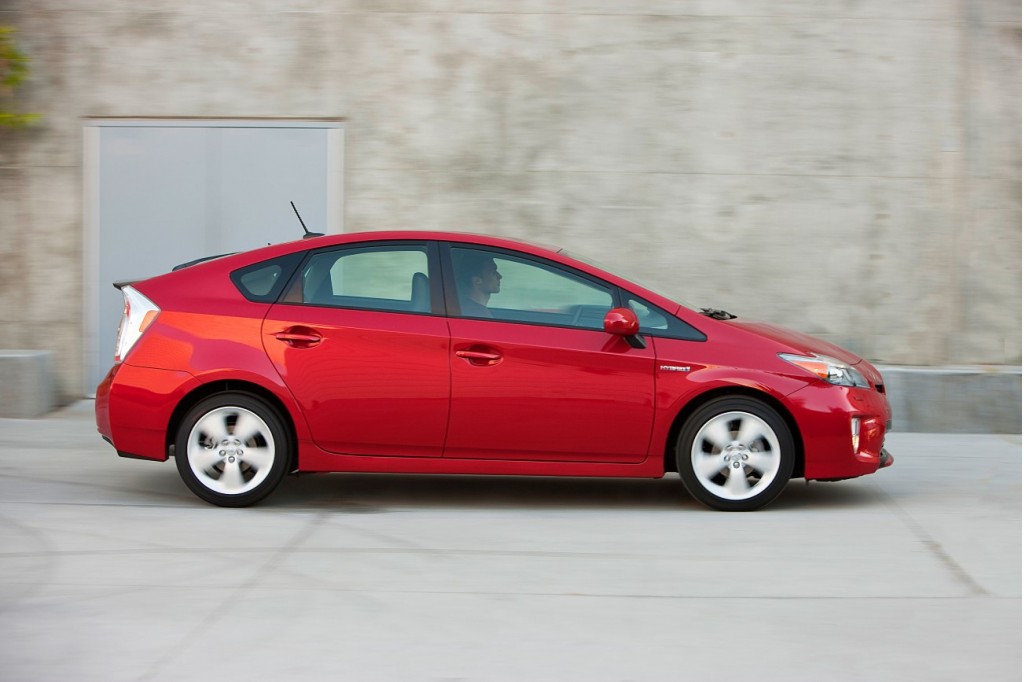Aerodynamics are a vital component of automotive efficiency.
The more air you have to push out of the way to reach or maintain a certain speed, the more energy you're using. And the more energy you use, the less efficient your journey will be.
ALSO SEE: Solar Roadways Smashes Crowdfunding Target, Still Raising More
Tesla Model S owners don't need aero numbers to confirm their car's efficiency, but it doesn't hurt--and Tesla Motors is rightly celebrating a recent Car and Driver test that puts its electric sedan at the top of the aero heap.
The magazine gathered five vehicles for a wind tunnel test, each of which boasts an impressively low stated figure for its coefficient of drag.
The outcome is fascinating--not just to see the discrepancy between tested figures and those claimed by the manufacturers, but for its insight into just how much that aero drag affects a car's progress down the road.
Car and Driver (.PDF file) measured the aerodynamic drag of five vehicles: the Chevrolet Volt, Mercedes-Benz CLA 250, Nissan Leaf, Tesla Model S P85, and the venerable Toyota Prius.
They also brought along a 2001 Honda Insight hybrid for reference--a car we're rather interested in right now, one with an official drag coefficient (Cd) of 0.25. Conventional subcompacts, by comparison, usually come in around the 0.30 mark.

2013 Toyota Prius
The Leaf, Mercedes, and old Insight were all significantly higher than their official figures, however.
Nissan's car returned a 0.32 figure in the wind tunnel, against an official 0.28. The Insight should have matched the Prius at 0.25, but came back at 0.30, and the CLA matched that figure--missing out significantly on its official 0.23.
The Cd figure alone doesn't tell the whole story, though.
Frontal area is equally important, and drag area--frontal area multiplied by the drag coefficient, even more so.
Here, the scores even out a little. The large, boxy Leaf has a 7.8-square-foot drag area, the largest of any vehicle in the test.
The relatively compact CLA is next up at 7.0 sq ft, the Volt hits 6.7, and both the Prius and the much larger Model S feature a drag area of just 6.2 square feet. The Insight, on account of its tiny 20.1 square-foot frontal area (over 5 sq-ft less than the Model S) has a wind-cheating drag area of just 6 square feet.
The numbers get even more interesting: Did you know, for example, that a Model S requires just 14 horsepower to maintain 70 mph, 4 hp less than a Leaf?

30 Days of the Mercedes-Benz CLA 250
Car and Driver does praise each manufacturer's efforts to reduce drag, though.
The magazines' editors feel the Leaf is compromised by its large, square shape and cut-off rear, but the aero-cheating headlights work well.
The CLA's problem is the large grille needed for its automatic transmission and hot turbocharged engine, but the overall shape is praised--particularly in light of the fact Mercedes doesn't fit grille shutters to U.S. models as it does in Europe.
The Volt and Prius work well, Toyota proving that the traditional high-tail "Prius shape" (also known as a Kamm-back, after the engineer who described it) is still aero-efficient.
And the smooth, slick Tesla simply works well everywhere--the company has really concentrated on aero efficiency.
It's worth noting that, like all aero figures, the numbers are subject to variability both on the day, and according to the design of the wind tunnel itself. This possibly explains some of the differences between manufacturer figures, and those in this experiment.
But it's rare that five (or six) cars from different automakers are lined up in the same tunnel, on the same day--and it really does give us an insight into the importance of aerodynamic design on modern cars.
_________________________________________












